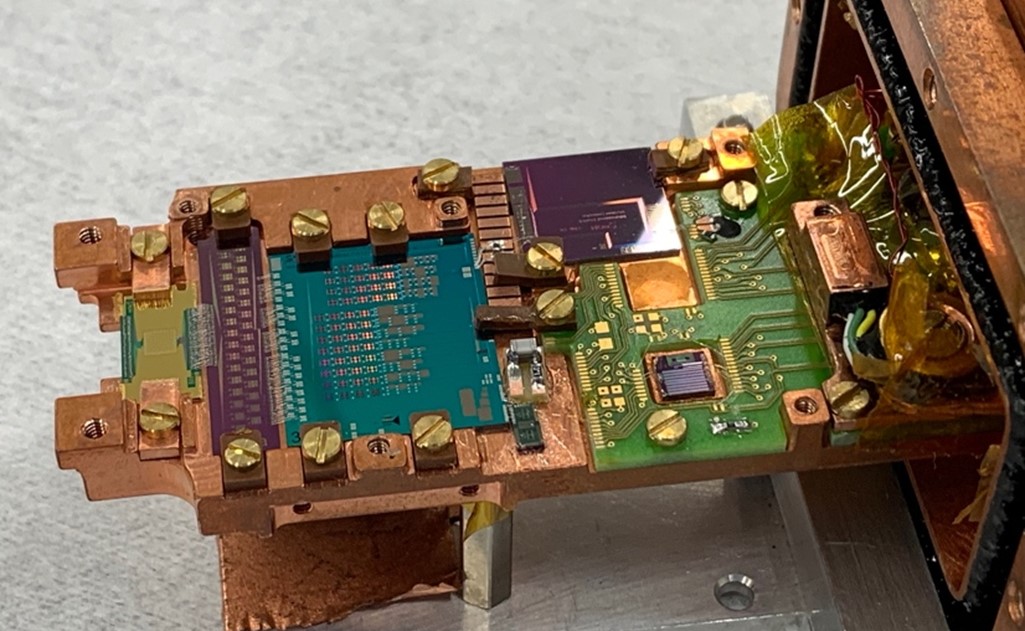SRON’s Transition Edge Sensors demonstrate potential as axion detectors
SRON scientists have demonstrated the potential of Transition Edge Sensors (TES) for detecting axions. These hypothetical particles have never been observed, perhaps due to the weak signals they produce. Evidence for their existence could point to the origin of dark matter.
Axions are hypothetical particles originally introduced in the 1970’s as a possible solution to several open questions in particle physics and cosmology. In more recent times, axions were presented as an attractive candidate for dark matter, a form of matter not yet observed directly that doesn’t interact in a conventional way with ordinary matter and should account for about 85% of the total matter in the universe.
Axions are theorized to sometimes convert into X-rays when passing through a strong magnetic field. Our Sun is one of the sources that are expected to produce them. A large magnet inside a telescope could force their conversion into X-rays. However, an X-ray detector with an extremely low particle background is required as axions only rarely convert into X-rays.
SRON scientists, including first author Davide Vaccaro, have now demonstrated that their TES could in principle achieve a low enough particle background. They have measured a background of less than one X-ray photon per hour for each square centimeter of detector. This is still a factor two thousand too high for a real axion-search experiment, but they have estimated that the background could be reduced below the required level under improved conditions. This includes better shielding from actual X-ray sources, such as cosmic rays and natural radioactivity of used materials. The finding makes SRON’s TES a suitable technology for the next generation of helioscopes.
The results are also relevant in the context of SRON’s TES being the back-up detector technology for ESA’s upcoming Athena X-ray space mission. A low particle background is not just a welcome feature for axion helioscopes; also conventional X-ray telescopes benefit from this, as it enables them to observe weaker sources.
Publication
The publication was selected for the cover of the April issue of Review of Scientific Instruments
D . Vaccaro; L. Gottardi; H. Akamatsu; J. van der Kuur; K. Nagayoshi; E. Taralli; M. de Wit; K. Ravensberg; J. R. Gao; J. W. A. den Herder, ‘Background rates of x-ray transition-edge sensor micro-calorimeters under a frequency domain multiplexing readout for solar axion-like particles’ detection’, Review of Scientific Instruments
Image caption: The cryogenic setup used for the X-ray background experiment, at -273.1 degrees Celsius, close to the absolute zero. The setup hosts the X-ray TES detectors, as well as the superconducting electronics that allow for a simultaneous readout of a large number of detectors, up to 32 in this particular case.
Pages:
- 1
- 2


